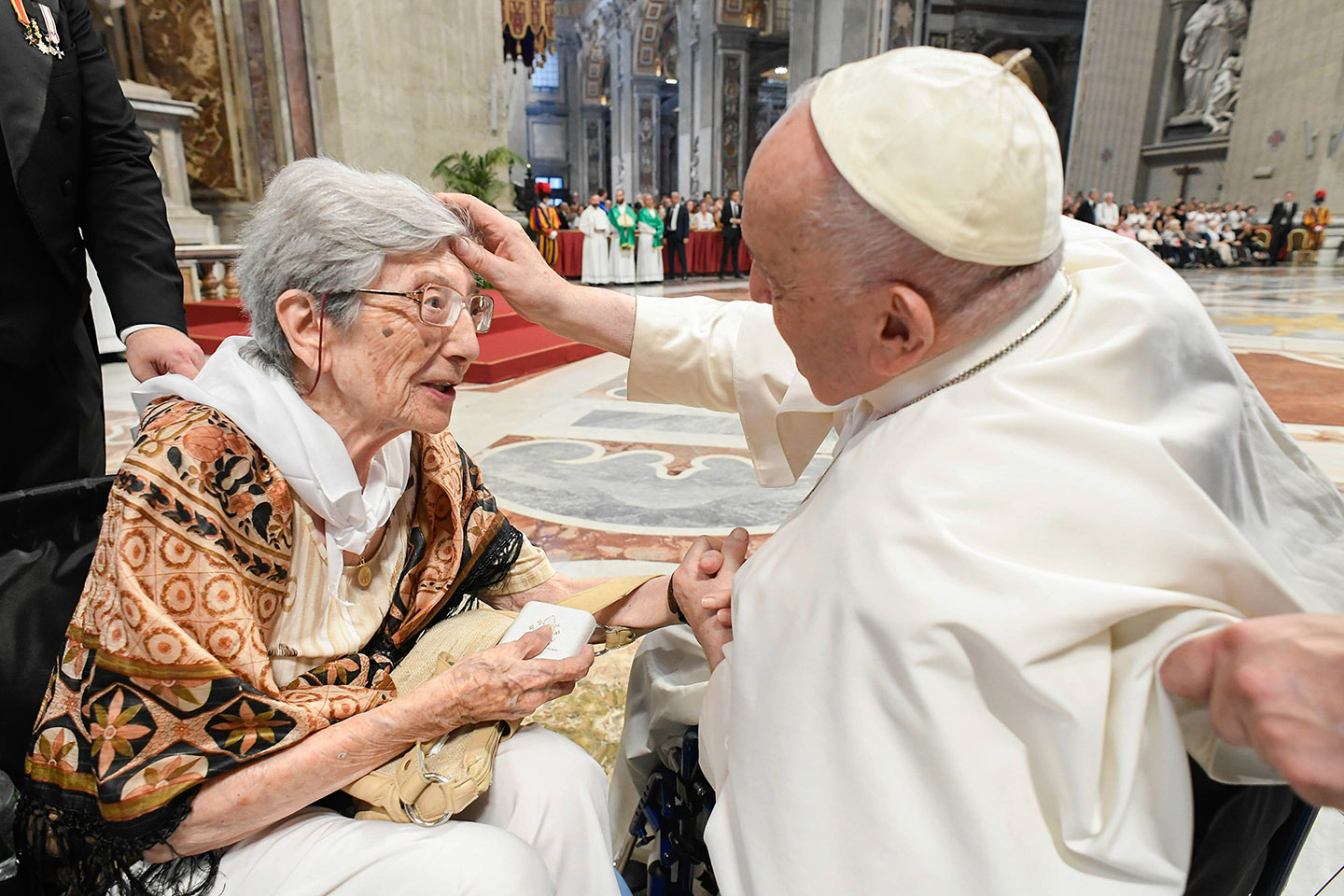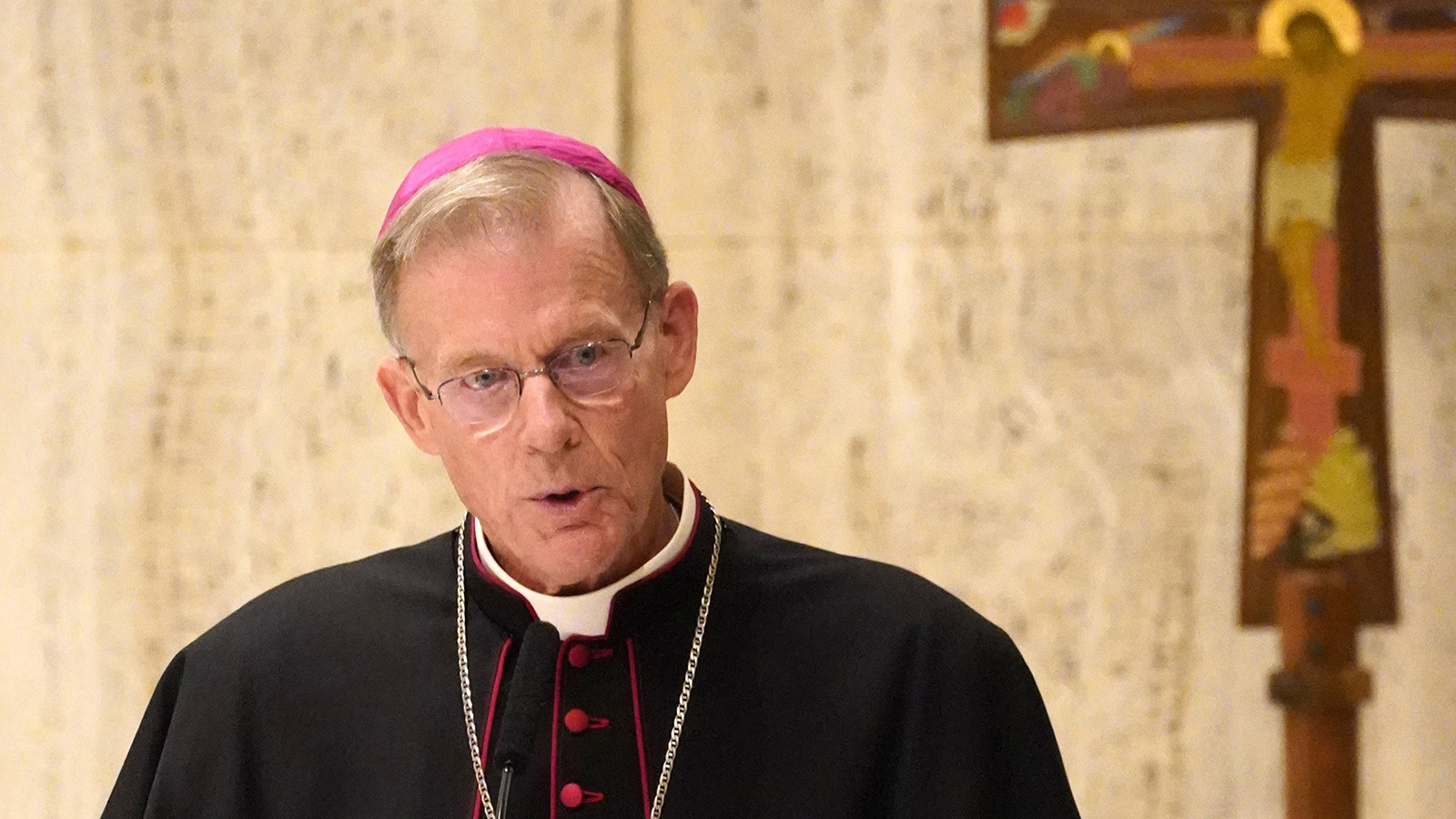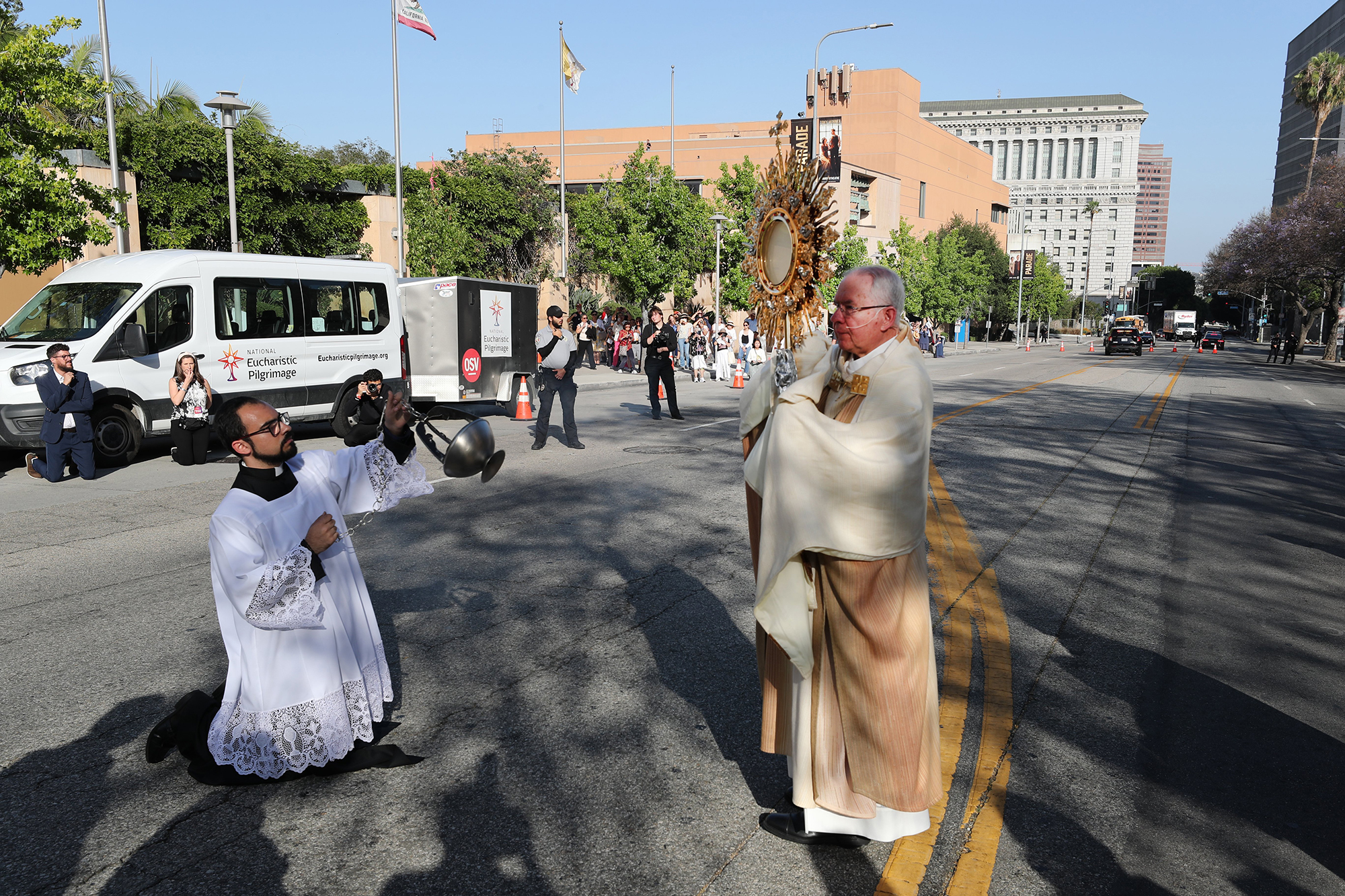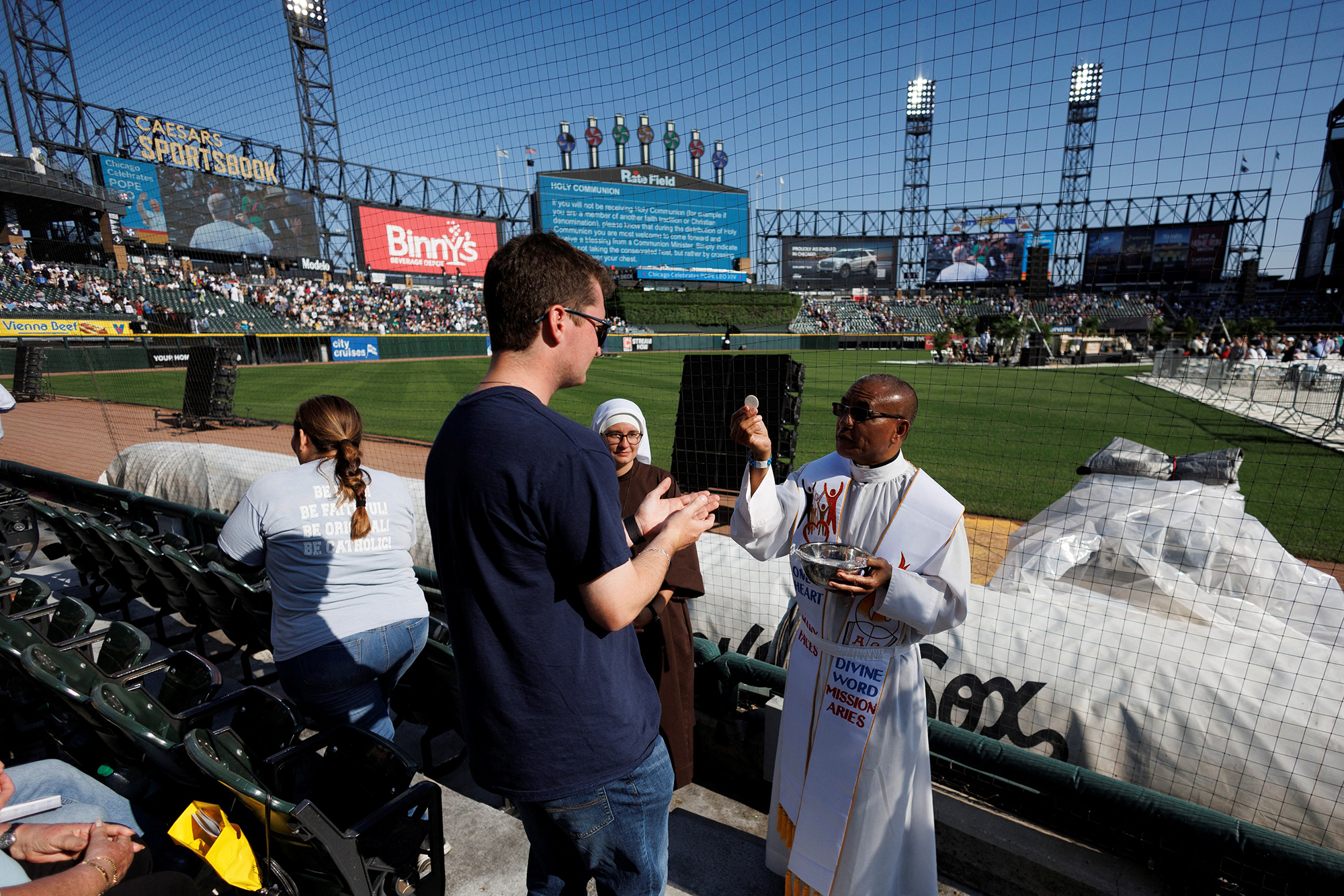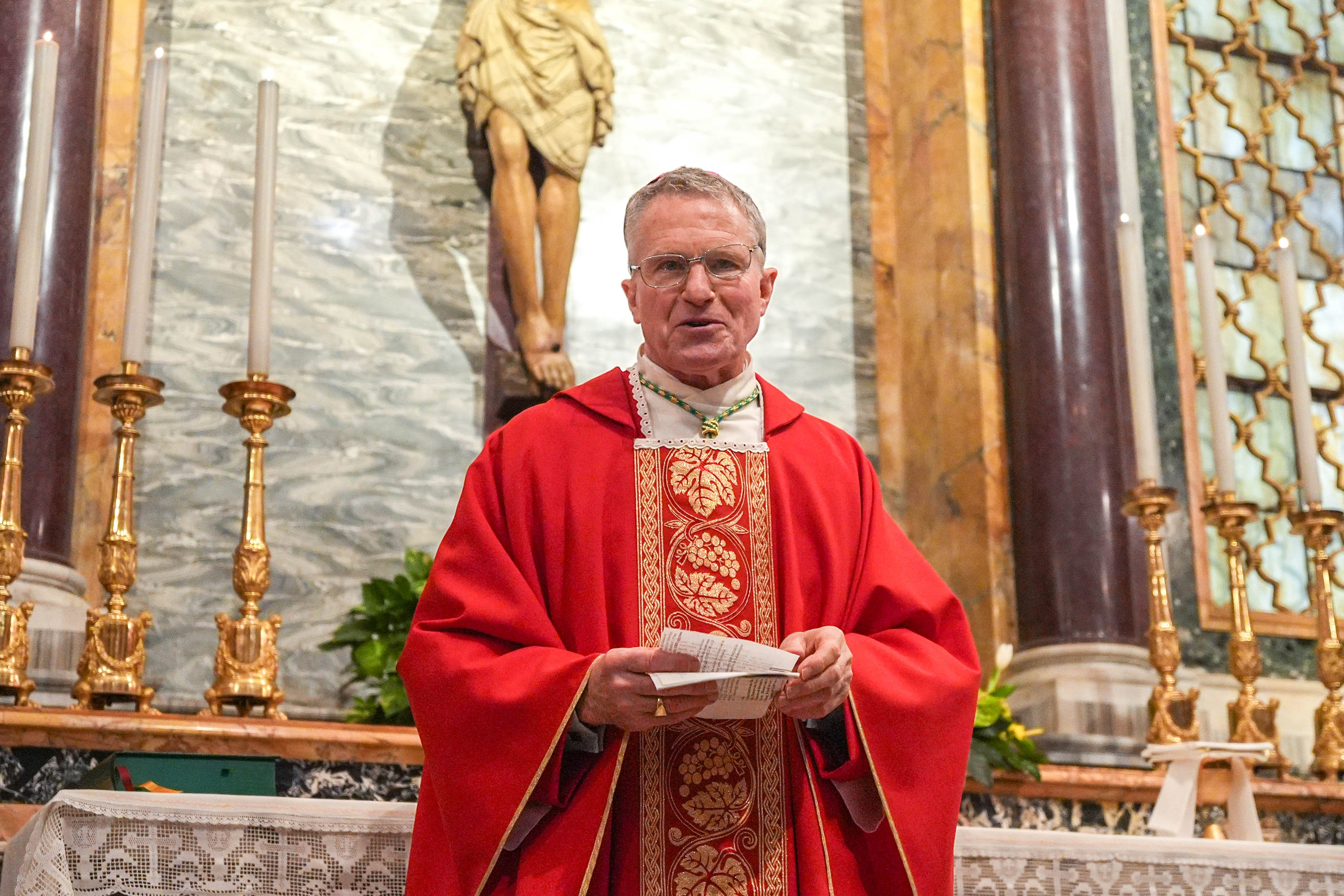Pope Francis: Focused on the peripheries
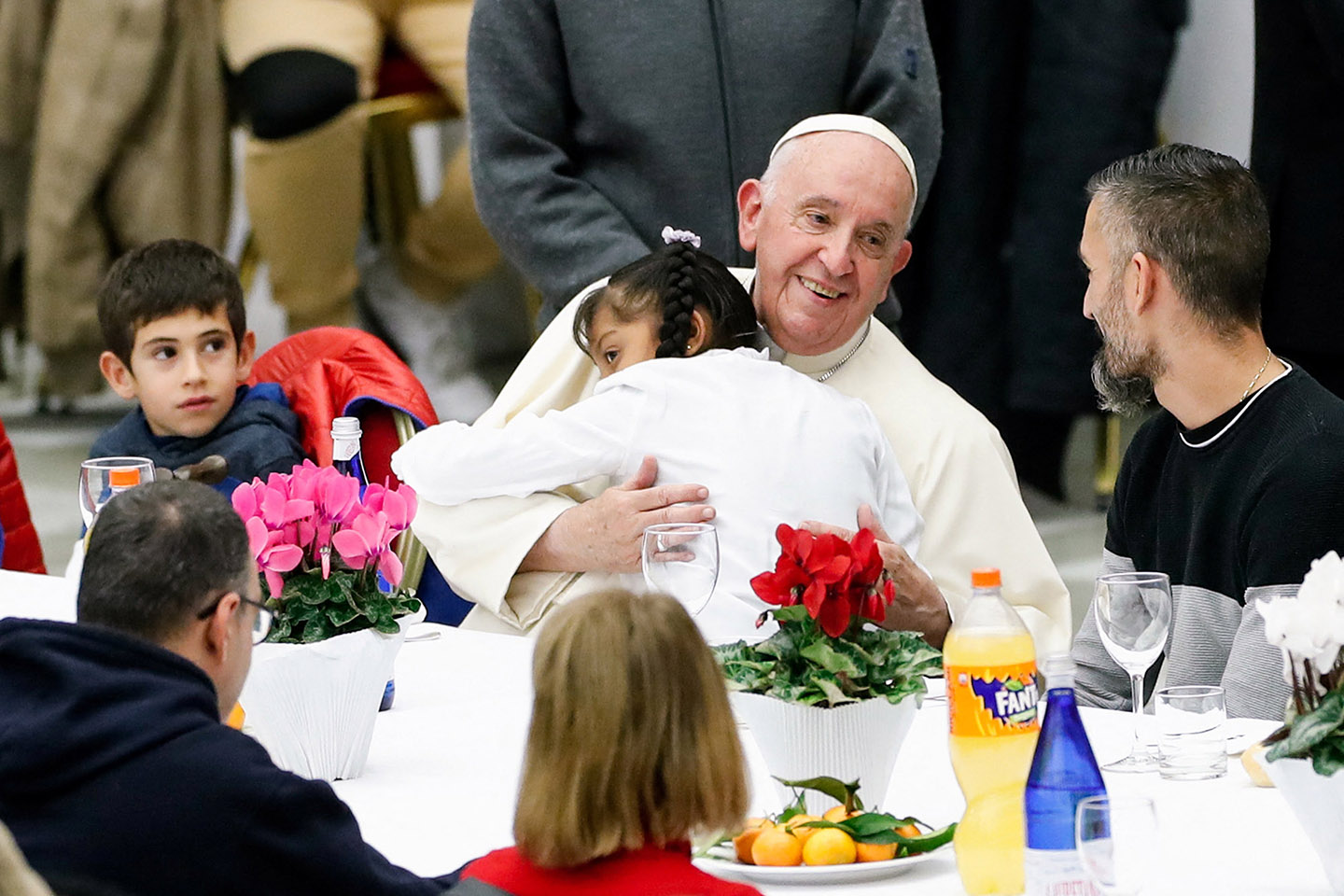
Pope Francis, who was the first pope from the global south, died April 21
Pope Francis, the first pope from the global south and a maverick who often delighted the world, was elected in March 2013.

The pope “from the end of the earth,” as the Argentine pontiff put it during his first public blessing, ended up leading the Catholic Church through two great crises: the global explosion of the clerical sexual abuse scandals and the unprecedented interruption of pastoral life caused by the coronavirus pandemic.
Pope Francis was born Jorge Mario Bergoglio on Dec. 17, 1936, in Buenos Aires, Argentina. He succeeded Pope Benedict XVI, the first pope in 600 years to resign, creating an unprecedented scenario of two popes living side-by-side in the Vatican — as Benedict himself put it, one pope “governing” and the other “praying.”
An advocate for migrants, interfaith dialogue as a way to prevent conflict, nuclear disarment, an end to the death penalty, and the dignity of workers, Pope Francis collected both friends and foes in his attempt to turn the 1.3 billion-strong Catholic Church into a “field hospital” with its doors open to all and with a special love for those on the margins.
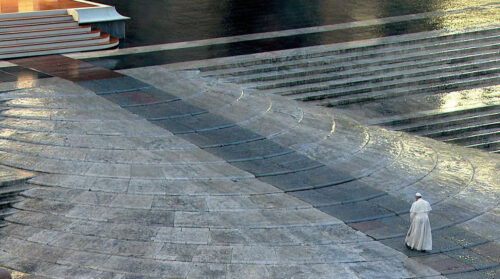
Pope Francis walked across an empty St. Peter’s Square at the Vatican on March 27, 2020, for a prayer service that was livestreamed across the world in the midst of the coronavirus pandemic.
Early on, Pope Francis provided perhaps the most celebrated (and arguably misunderstood) papal sound bite of the last century when he said in response to a question about a gay cleric, “Who am I to judge?” However abused the line may have been, it captured something of the spirit of a papacy that clearly valued people more than theory and pastoral sensitivity more than law.
Pope Francis leaves behind an unfinished reform of the Roman Curia. He took several steps intended to promote transparency, accountability and decentralization, but as time went on the overhaul seemed to stall and fresh scandals erupted, including a $200 million Vatican property deal in London in 2019 that led to the departure of several key reformers and raised questions about whether anything had really changed.
Pope Francis also led the Church at a time when the clerical abuse crisis crossed borders far beyond the West, with an unprecedented crisis in Chile that drove the Argentine pontiff to make a U-turn when it came to addressing crimes committed by clergy.
In an attempt to face matters head-on, he summoned heads of the national bishops’ conferences and the leaders of religious orders to Rome for a three-day summit in February 2019.
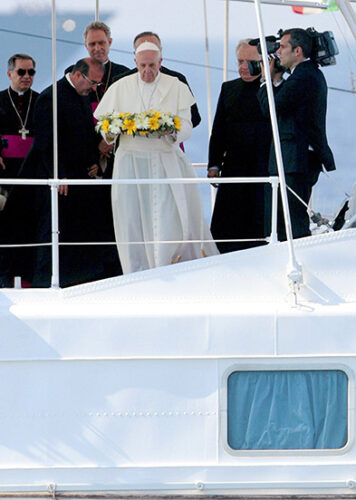
Pope Francis tossed a wreath of flowers into the Mediterranean Sea off the Italian island of Lampedusa on July 8, 2013. The pope threw the wreath to honor the memory of immigrants who have died trying to cross from Africa to reach a new life in Europe.
Critics argue the summit left behind considerable unfinished business, but others say that after Pope Francis’s leadership, no bishop in the world can claim he doesn’t know what’s expected when it comes to caring for victims and bringing perpetrators to justice.
In his first public appearance after his election in 2013, the pope, who took his name from St. Francis of Assisi, demonstrated his commitment to humility, not only giving a blessing but asking people to pray for him.
From that first glimpse of Catholicism’s new chief shepherd, it was clear that Francis didn’t intend to lead merely a “transitional” papacy, just keeping the seat warm and maintaining the status quo. He was driven by a conviction that the Church had become too set in its ways, too clericalist, too distant from ordinary people and especially the poor, and he was determined to shake things up.
Francis was the first pope from the Americas, the Southern Hemisphere and the first successor of Peter to come from outside of Europe since Syrian Gregory III led the Church in the eighth century. A man coming from the world’s peripheries himself, he focused much of his pastoral attention and even his political capital on those living in the margins of society, or as he often said, “the outskirts.”
This meant that much of his ministry was focused on those who were outside the Church, either because of life choices, such as believers who are divorced and civilly remarried, or life situations, such as indigenous communities in the Amazon struggling with severe priest shortages.

Pope Francis addressed a joint meeting of the U.S. Congress as then-Vice President Joe Biden, left, and then-Speaker of the House John Boehner looked on in the House of Representatives Chamber at the U.S. Capitol in Washington Sept. 24, 2015.
Pope Francis “will long be remembered for his outreach to those on the margins of the Church and of society,” Archbishop Timothy P. Broglio, president of the U.S. Conference of Catholic Bishops, said in a statement.
“He renewed for us the mission to bring the Gospel out to the ends of the earth and offer divine mercy to all. He has also taken advantage of the present Jubilee to call us to a profound hope: one that is not an empty or naïve hope, but one grounded in the promise of Almighty God to be with us always,” Archbishop Broglio wrote.
Known for insisting that bishops should have “the smell of the sheep,” and for demanding priests and religious get the hems of their cassocks dirty doing God’s work, Pope Francis was never one to stand on the sidelines.
His first trip outside of Rome was to the Italian “migrant” island of Lampedusa, where he condemned global indifference to the humanitarian crisis of those fleeing hunger, war and persecution, trying to find a safe haven in Europe after a perilous trip that caused the death of thousands. In his homily during a penitential Mass on the island, the pope mourned the loss of innocent lives and warned that the indifference to such tragedies occurs when “humanity as a whole loses its bearings.”
“Father, we ask your pardon for those who are complacent and closed amid comforts which have deadened their hearts,” he prayed. “We beg your forgiveness for those who by their decisions on the global level have created situations that lead to these tragedies. Forgive us, Lord!”
In nearly all of his 47 international trips, the issue of migration played a central role, and in many cases, was the impetus for his visits. In 2016 and 2021, he traveled to Lesbos, Greece, a major gateway for refugees entering Europe. During his 2016 visit, he brought 12 Syrian refugees — three families with six children — who were facing deportation from the island back to Italy with him aboard the papal plane, describing the act as a “purely humanitarian” gesture.

Pope Francis arrived to pray at a cross on the border with El Paso, Texas, before celebrating Mass at the fairgrounds in Ciudad Juarez, Mexico, Feb. 17, 2016.
He traveled to the Central African Republic in 2015, despite the ongoing religious-fueled civil war; Myanmar and Bangladesh two years later, as the military in Myanmar was systemically annihilating the Muslim Rohingya minority that hadn’t been able to flee to neighboring Bangladesh; and to Colombia in 2017, months after a peace deal ended a five-decades long civil war. His impromptu stop to pray at the wall that separates Israel and Palestine during a 2014 visit would also have global echoes, as would his 2021 trip to Iraq.
Though he visited relatively few Western countries, including the United States in 2015, he often used his political capital to try to help where he felt he could influence matters. In December 2014, U.S. President Barack Obama and Cuban leader Raul Castro thanked him for what became known as the “Cuban thaw,” meaning the warming of the relationship between the two countries ending a 54-year stretch of hostility.
Like St. John Paul II before him, Pope Francis also displayed an instinctive understanding of the power of gestures. Two moments of prayer were among his most iconic images: Francis’ visit to Auschwitz in 2016, where he remained entirely silent to underline the futility of speech in the face of such evil; and his “urbi et orbi” blessing from an empty St. Peter’s Square in March 2020 during a global moment of fear and uncertainty at the start of the coronavirus pandemic. On that haunting night, Pope Francis became the world’s pastor, saying, “From this colonnade that embraces Rome and the whole world, may God’s blessing come down upon you as a consoling embrace.”
“Pope Francis put the poor in the center of his papacy because this meant precisely being in the center of the Gospel,” Cardinal Konrad Krajewski, prefect of the Dicastery for the Service of Charity, kept repeating throughout the pontificate when asked about initiative after initiative for the Roman homeless and disadvantaged.
